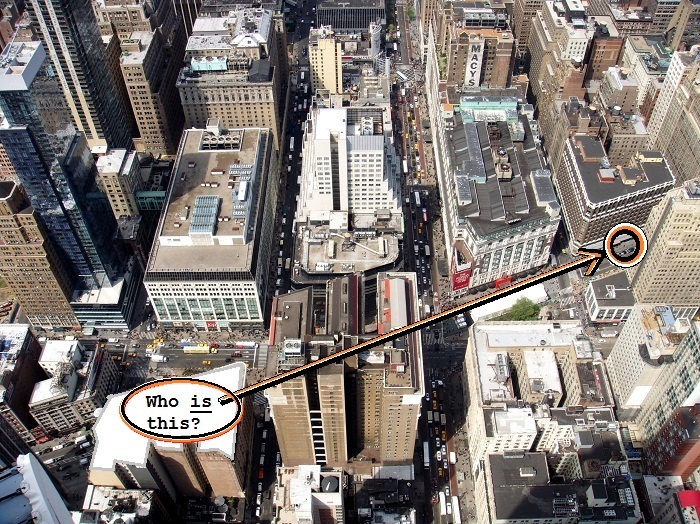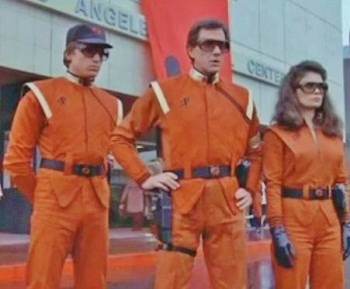
|
issue |
001 |
march | 1 | 2013 |
|
|
NYC | Car Free Day in Kampala | Living poets: Bruno K. Öijer | Just because you're paranoid | Suspicion breeds confidence | Permanent death | V for Visitors
|
| |
| NYC |
|

2012 by Kurt Koehler @ realitybroker.org |
|
 |
Realitybroker Series:
Human Powered Mobility
Episode
1: Car Free Day in Kampala
2013 by Ed Liftpirat @ realitybroker.org |

2011 by Kurt Koehler @ realitybroker.org
Busy Kampala |
|
|
I
remember spending a substantial part of my youth eating ice cream in front of
the bakery of the neighboring village on my way home from school. In the summertime it was customary not to take
the school bus, but to seize the opportunity to spend a few extra hours
away from home by riding your bike to school. There was a designated
cycling trail, running through fields, villages, passing by a cemetery,
along little streams, and through the heavy fumes of a nearby iced tea
factory. From time to time you would hear the roar of an older kid's
moped overtaking you at high speed. The ride was dangerous only where
you had to cross a big street or even cycle in the street.
Since
I moved to the city, I have given up cycling completely. I envy the
fearless cyclists that defy the dense motorized city traffic, but at
the same time, as a pedestrian I am terribly afraid of all the reckless
cyclists. I know I am not alone with my problems. Realitybrokers
recently decided to start a series on human powered mobility in urban
settlements. So I did some research into urban cycling and stumbled
upon a report on the First Car Free Day held in Kampala, Uganda on
December 18, 2011.
It is said to have started out as a so-called "cycle
for fun" event, at which 10 women and 36 men had participated. This
group later set up Kampala's first ever car free day in less than two
months. They received support from international FABIO, the First African Bicycle Information Organisation, and from several local and national groups, including TAFMOD Uganda, Teens Uganda, Kampala Cycling (the city's professional cycling team), and local political authorities
such as the Kampala Capital City Authority (KCCA), and even from the United Nations Decade of Action for Road Safety.
I
asked Realitybroker correspondent and bicycle proponent Kurt Koehler,
who happened to have been to Kampala in 2011, whether he had learnt
anything about a growing local cycling lobby, and what he could report
on the
cycling situation in Kampala. He had not heard of this campaign, but
was intrigued. He confirmed that there was a considerable number of
cyclists on the streets of Kampala, but that
the locals considered cycling to be a dangerous activity - for good
reasons, as cyclists and pedestrians are pushed to the wayside by an
avalanche of boda bodas (motorcycle taxis) and automobiles. Kampala, it
seems, suffers from the same ailments as most global cities.
According
to reports, both the Director of Physical Planning, Mr. George N.
Agaba, and the mayor of Kampala, Mr. Erias Lukwago, attended the First
Car Free Day in Kampala. Mr. Lukwago was quoted as saying: "We need to
change the way people think about bicycles." The national television
network ran a poll which showed that a majority of Kampala's residents
supported the idea of improving conditions for cyclists and
pedestrians. With about 350 people riding their bikes through
closed-off streets of the city, the very first Car Free Day was a
success, with broad media coverage calling to attention the potentials
of sustainable mobility. According to the organizers, it allowed those
involved to experience their own city through a different lens.
Amanda
Ngabirano of the organizing team is quoted as saying that mistakes made
by the West concerning urban mobility must not be repeated. "If you
look at telephones, Africa skipped the steady line and immediately went
to wireless cell phones. We can do the same with sustainable
transport."
In December 2012, the second edition of Car Free Day Kampala took place. ∎
|
Sources
Car Free Day Kampala 2011
http://allafrica.com/stories/201112180087.html
http://www.ecf.com/news/four-fear-free-hours
| Further reading
Car Free Day Kampala 2012 on Facebook
Dar es Salaam Pedestrian Festival |

2011 by Kurt Koehler @ realitybroker.org
Mountain-biker
in hilly Kampala |
|
 |
| Living
poets |
DIN SKUGGA
Bruno K. Öijer
Swedish original
jag väckte din skugga
jag drog till mej all din grymhet
när jag stängde fönstret inom dej
som alltid stått på glänt
och släppt ut tyngden av andedräkt från alla
som kom dej för nära
även i ditt sätt att strö blomblad för vinden
fanns en frånvaro
och en omärklig köld som långsamt
åt sej i mej och gjorde sej hemmastadd
tills du fått mej att glömma vem jag en gång var
glansen av svarta streck
strålade kring dej som om du ritat
och ständigt fyllt i längs konturen av din själ
tills allt som band och höll dej kvar
gav vika och brask under den vassa spetsen
och jag hade bara dej
jag älskade dej och du gjorde mej ont
du skändade mej
du trasade medvetet sönder mej steg för steg
och ledde mej in i ett sjukt landskap
där all som fortfarande var vid liv
stegrade sej inom mej och drev mej
att samla mina tankar till en grav runt din kropp
och jag ville inte
jag sjönk på knä av förtvivlan
jag höll ditt bortvända ansikte ännu tätare
intill mitt bröst
Öijer, Bruno
K. 1995. Det förlorade ordet. Stockholm: Wahlström
& Widstrand |
YOUR SHADOW
Bruno K. Öijer
English adaption: Per Baumann
I awakened your shadow
I contracted all your cruelty
when I closed the window within you
that had always stood ajar
and had let out the weight of breath from all those
who came too close to you
even in your way of scattering petals for the wind
there was an absence
and an imperceptible cold that slowly
ate itself into me and made itself at home
until you had made me forget who I once was
the gloss of black streaks
radiated around you as if you had been drawing
and kept filling in along the contours of your soul
until everything that tied you up and kept you
gave way and burst under the sharp tip
and I had only you
I loved you and you hurt me
you violated me
you consciously tore me apart step by step
and led me into a sick landscape
where everything that was still alive
reared up within me and drove me
to gather my thoughts to a grave around your body
and I did not want to
I fell down on my knees in despair
I held your averted face even tighter
to my chest |
|
 |
| Just
because you're paranoid
|

2012 by Expedition
I:T:L:I:E @ realitybroker.org
You remember asking
yourself: Is it manned? And if so, what does the pilot look like? Piercing eyes and angry mustache? Or is there a 28-year-old
coward in a secret government bunker jiggling a joystick?
Then it turned and dove, now heading for your living-room
window. And you
remember thinking: I should not have called customer service and
argued with them over the unpaid bill // I did not have to tweet that
doodle with the insane old man taking a dump over planet Earth // I
knew I'd be
flagged for not joining the neighborhood watch. |
|
|
 |
| Suspicion
breeds
confidence |

2012 by Expedition
I:T:L:I:E @ realitybroker.org
"Suspicion - call us!" Zurich,
December 2012 |
|
 |
| Permanent
death |
|
On
December 12, 2012, two young men headed to
Zurich in the S6 were overheard passionately discussing the pros and
cons of permanent death.
It took the eavesdropper a few minutes to figure out that this was not
a debate about the truth value of religious writings, but one
pertaining to video games.
Permadeath, as it is also called, is
an alternative to the widespread option of revitalizing
a fallen player character
in video games for the purpose of keeping an
ongoing game
alive. Young man no. 1 was a fervent proponent of character
restoration, arguing that it sucks to be engaged in a role game all evening,
|

2012 by Expedition
I:T:L:I:E @ realitybroker.org
|

2012 by Expedition
I:T:L:I:E @ realitybroker.org |
only
to
fall into a hidden deadly pit ten pixels
before the gate to level 5.
Young
man no. 2, on the other hand, was equally passionate about permadeath,
arguing that
character restoration takes the significance out of any action chosen
by the player, making video games nothing more than an entertaining way
to kill time.
Then young man no. 2's cell phone rang. After repeating the phrase Ja, Schatz (Yes,
Honey) three times, he hung up the phone and started a new topic with
young man no. 1: how to react when your girlfriend keeps siding with your mother.
|
|
 |
V for
Visitors
2012 by Kurt Koehler @ realitybroker.org |

2011 by Kurt Koehler @ realitybroker.org
They're here.
Are you an era-ist? When
you watch vintage sci-fi movies, are you making an effort to follow the
storyline, or are you just getting worked up over its outdatedness, thinking: "That flick has
the Sixties / Seventies / Eighties written all over it! How naive
must
a movie maker be to
have aliens walk around in the same ridiculous clothes that happened to
be in style when the movie was made?"
If
your thoughts are of the latter kind, then you are an era-ist. And
let's be honest: We are all a bit era-ist. We laugh at the
sphere-shaped furniture aboard spaceships of just about every Sixties
sci-fi movie. We rofl over the turtlenecks and the brown upholstered furniture in Logan's Run (1976!). And we can't believe they actually thought computers would talk
without intonation for the next 500 years (a famous exception being HAL
9000 from the 1968 movie 2001: A Space Odyssey, who was given an almost
inhumanly human voice).
There are some things we cannot put our finger on
right away; like why it feels awkward that many a device displayed in vintage sci-fi movies has an impractically boxy,
monolithic design that neatly conceals any hint of internal chaos of
chords and
chips (partial explanation: it wasn't until recently that see-through
computers and
remote controls obtained acceptance - before that, futuristic meant
denying the average consumer insight into the buildup of complex
technology).

Source: V (1983) by Kenneth Johnson Productions
Fashion from
Sirius: Diana and fellow aliens
Source: V (1983) by Kenneth Johnson Productions
Dedication to the universal Resistance
Did
you know that 'V' was originally projected to be about Earth-bred
fascists? We sci-fi buffs may be glad the plot went extraterrestrial,
but shouldn't we also be grateful that they didn't just
turn it into one of those "open day at your local flying saucer" movies?All
politics aside, who wouldn't want a tour of Diana's mothership? The bad
news is:
There never was a mothership hovering above L.A., not even in 1983. The
good
news is: One of their motherships actually crashed in Montreal, Canada,
in the late 1960s and was later made into an Olympic Stadium. Take a
walk around this slightly run-down architectural
monster. Peek through the tinted windows and enjoy the shivers. They
have even turned the adjacent former alien meatpacking plant into a
neat
exhibition of the major ecosystems of the Americas. Fun for the whole
family.
LISTEN:
Theme song of 'V: The Final Battle' (1984)
MUSIC INSPIRED BY 'V':
Science Frontiers - Red Dust (2012)
|
In
the unforgettable television miniseries 'V' (we are talking about the
1983/84 original, not the CGI-overkilled remake of 2009),
50 flying saucers show up uninvited over the major cities of the
world. In episode 1, there is a noteworthy line from a resident of Los
Angeles, played by actor Hansford Rowe: "How can it just hang there?"
The utterance is interesting for the fact that 30 years after the broadcast of the series, we can
all still relate to this expression of incredulity over the silent hovering of the
enormous spacecraft, probably because humanity is yet to
come up with an economic way of nailing a 3-mile-wide metal disc to the sky, despite undeniable technological advances.
There
are two ways to watch sci-fi movies that are more than 20 years old. One
can either get involved in the story as if it were a present-day
release, or one can resort to superficial marveling at the primitive special effects and the awful costuming.
Source: V (1983) by Kenneth Johnson Productions
"How
can it just hang there?"
Your amusement over the past is fine - as long as you don't think they won't laugh at
"our" present sci-fi movies in the year 2040.
But let's get back to 'V'. How "1983" is 'V'? Sure, there are the edgy alien uniforms that look suspiciously
like something that was standard wear in just about every music clip of the era (but please note that Santigold
wore a
possibly
'V'-inspired catsuit as late as 2009!). And yes, alien commander
Diana's "Big Hair" (which seems to have grown bigger with every
episode) is a dead giveaway of a time long gone. But then, have you even been following the
story? Aren't you
forgetting that the Visitors' strategy was to "blend in"? If you
arrived on planet Earth in the early 1980s and needed to conceal your
true hairless,
reptile nature, wouldn't you invest some time in backcombing your wig
every morning?
Granted,
in more than one respect, original 'V' is a child of the Eighties. But
does it really keep a 21st century viewer
from connecting with the plot? I contend
that unlike many sci-fi movies of that era, the narrative of 'V' is much
more than just a pretense to impress the viewer with mind-blowing
artifacts of some inventive prop department. In fact, the makers were
probably fully aware of the distinguishing otherness of their
production. In the first episode of 'V', a newsman describes the interior
of the alien mothership as follows: "And for those of us accustomed to
the likes of Close Encounters or Darth Vader's futuristic star
destroyer, our first glimpses inside of the spacecraft of the Visitors
were somewhat unexpected, even disappointing. No great walls of lights
or other things that science fiction buffs would take in stride. The
docking bay looked rather like the hangar deck of one of our big
aircraft carriers."
I further
contend that what makes 'V' different is the fact that above all, it
does not tell the story of an interplanetary encounter and the stunning anatomical and cultural differences between Earthlings and Sirians, but rather the story
of an insidious fascist takeover. The seriousness of this
narrative superstructure is arguably what will keep 'V' fresh for the next
few decades. It forces the viewer to look past the shoulder pads and the Big
Hair.
|
 2012 by Kurt Koehler @ realitybroker.org
Montreal, Canada: Mothership turned Olympic Stadium
|
|
 |
|
